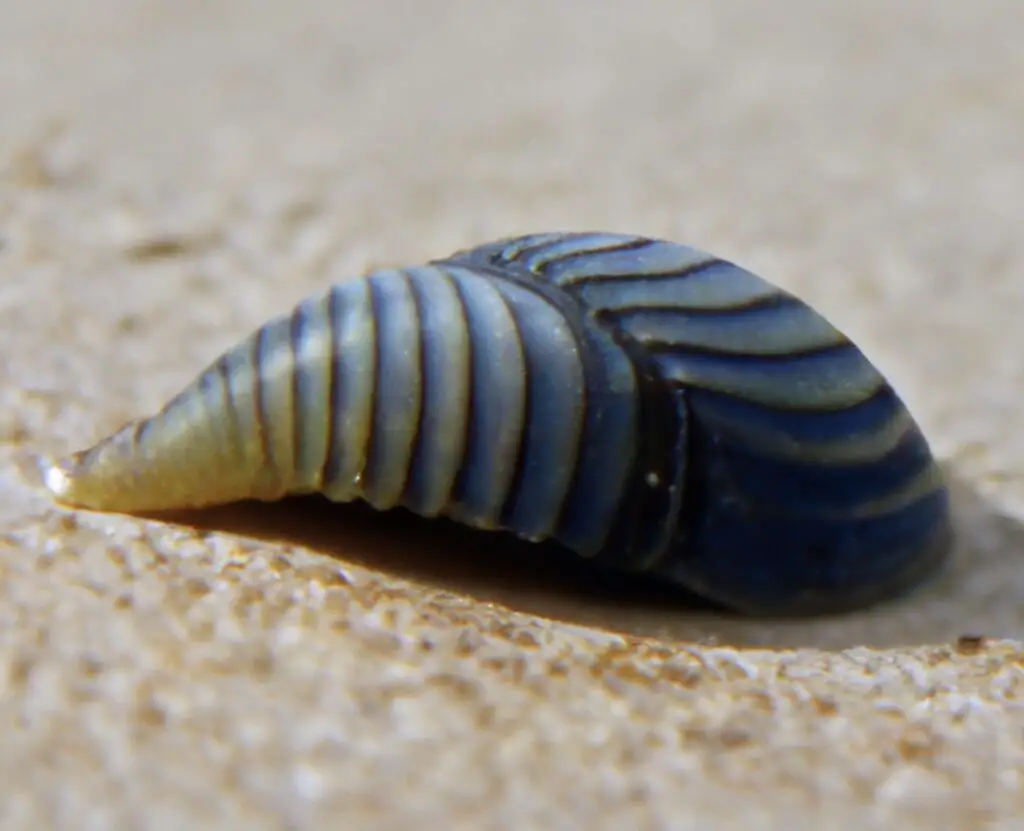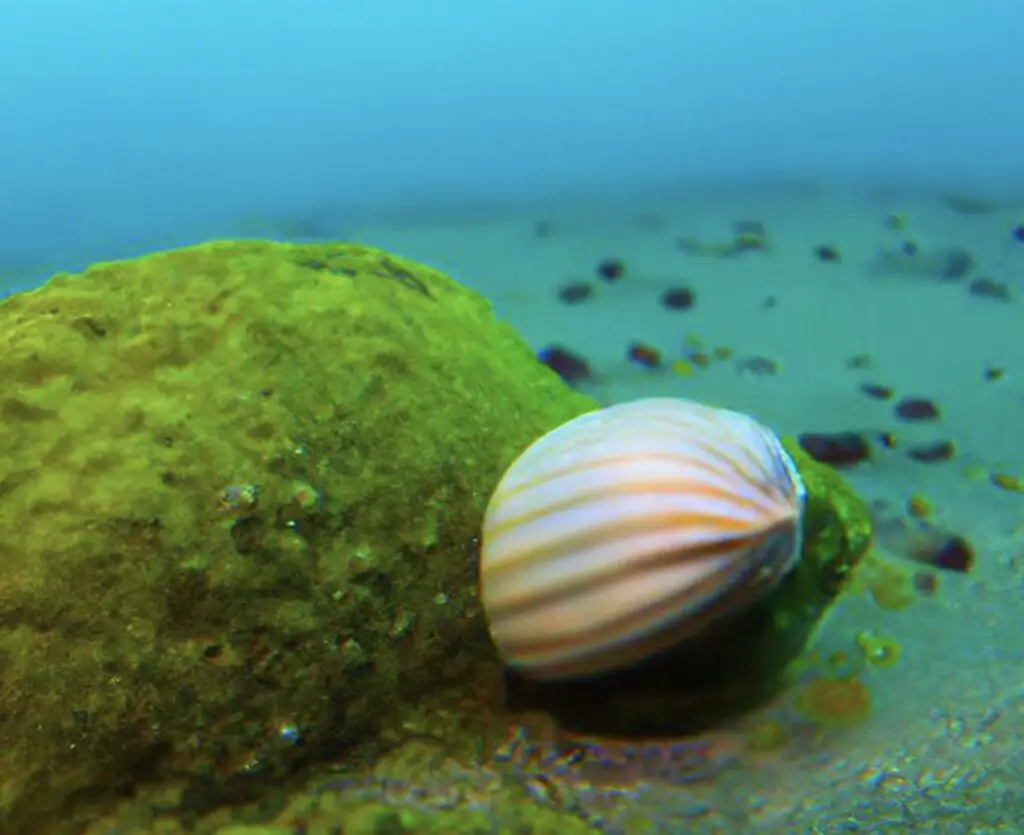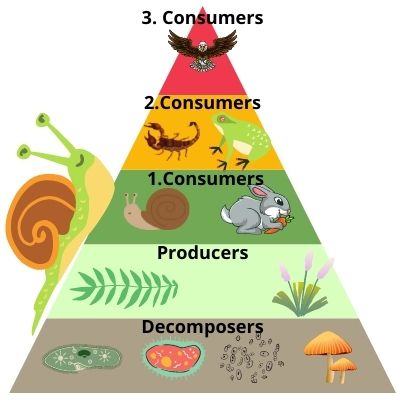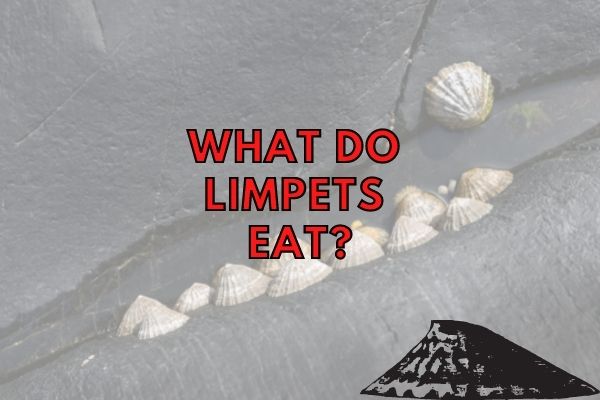Limpets are small marine creatures that live on the shores of oceans and feed on algae. They are a type of sea snail that has a conical shell. They are found in all the world’s oceans. Limpets attach themselves to rocks in the intertidal zone and graze on algae.
Limpets are herbivores that graze on algae growing on rocks. They use their radula (a tongue-like structure) to scrape off the algae, which they then eat. This grazing helps to keep the rocks clean and prevents them from being covered in algae.
Primary Diet of Limpets
The diet of limpets primarily consists of algae, which they scrape off rocks using their specialized radula, a ribbon-like structure covered in tiny teeth. Limpets are marine gastropod mollusks that belong to the family Patellidae and are commonly found in intertidal zones around the world. Their feeding habits and diet play a crucial role in their ecological niche and the overall health of coastal ecosystems.

Limpets have a unique feeding strategy that involves their strong muscular foot, which they use to attach themselves firmly to rocks. They are known for their ability to withstand the force of crashing waves and tidal movements. Their diet mainly comprises different species of algae, including both microscopic and macroscopic varieties. These algae provide them with essential nutrients for their growth and survival.
To give you a comprehensive understanding of the diet of limpets, let’s explore the different types of algae they consume:
- Microscopic Algae:
- Diatoms: These single-celled algae are a significant food source for limpets. They are abundant in intertidal zones and form a brownish or yellowish film on rocks, known as a biofilm. Limpets graze on this biofilm to obtain nutrition.
- Green Algae: Various species of green algae, such as Ulva and Enteromorpha, are consumed by limpets. These algae can form thin, sheet-like structures or filamentous forms in the intertidal areas, providing a food source for limpets.
- Macroscopic Algae:
- Kelp: Limpets feed on kelp species like bladderwrack (Fucus vesiculosus) and serrated wrack (Fucus serratus). These brown algae grow in the intertidal and subtidal zones, forming dense patches. Limpets scrape the surface of kelp fronds to extract their nutrients.
- Sea Lettuce (Ulva lactuca): This green alga is a common food source for limpets. It forms leaf-like structures and can be found in intertidal rock pools. Limpets consume sea lettuce by grazing on its edges.
- Red Algae: Limpets also consume various species of red algae, such as dulse (Palmaria palmata) and carrageenan-producing algae (Chondrus spp.). These algae have distinct red pigmentation and provide important nutrients to limpets.
In addition to algae, limpets may occasionally consume other organic matter present in their environment, such as detritus or small fragments of dead animals. However, algae remain their primary and preferred food source.
To summarize the diet of limpets, here’s a table categorizing the types of algae they consume:
| Algae Type | Examples |
|---|---|
| Microscopic Algae | Diatoms, Green Algae |
| Macroscopic Algae | Kelp (Fucus spp.), Sea Lettuce (Ulva lactuca), Red Algae (e.g., dulse and carrageenan-producing algae) |
It’s important to note that the specific species of algae consumed by limpets may vary depending on their geographic location, as different regions support different algal communities.
Limpets are well-adapted to their feeding habits and play a significant role in controlling algal growth in rocky intertidal ecosystems, which helps maintain a healthy balance within these habitats.
How do limpets eat?
Limpets attach themselves to rocks, shells, and ship hulls. They graze on the algae and kelp that grow on the hard surfaces by scraping the food with their radula, which is a tongue-like organ. The same type of organ found in an octopus! Limpets then digest the food by secreting enzymes.
Limpets have a unique feeding mechanism that allows them to graze on algae and other microscopic organisms found on rocky surfaces. Their feeding behavior and specialized adaptations make them fascinating creatures to study.

The feeding process of limpets begins with their ability to attach themselves firmly to the substrate using a muscular foot, which creates an airtight seal between the shell and the rock surface. This suction-like attachment provides stability and prevents them from being dislodged by the force of waves and tides.
Limpets primarily feed on algae, which grow on the rocks they inhabit. They use a specialized feeding organ called a radula to scrape and graze on the thin layer of algae, diatoms, and other microorganisms present on the rocks. The radula is a ribbon-like structure covered with numerous rows of tiny, sharp teeth that they use to scrape the surface and obtain their food.
To feed, a limpet uses its radula to scrape a path on the rock, creating a distinct feeding scar. As it moves along the rock surface, it grazes on the microscopic organisms that are present, leaving behind a clean trail or “rasp” mark. The radula is continuously moved back and forth in a rasping motion, effectively scraping off the algae and other organic material from the rock.
Limpets have a remarkable feeding adaptation that allows them to overcome the challenge of consuming algae growing on a constantly changing and often uneven surface. They possess a remarkable ability to detect and remember the location of their preferred feeding sites. Limpets return to the same spot during each high tide, which minimizes the time and energy they need to spend searching for food.
Another adaptation that aids their feeding is the mucus they secrete. Limpets produce a layer of mucus that acts as a lubricant, allowing them to move smoothly across the rock surface. The mucus also helps in trapping and gathering food particles, which can then be scraped into the mouth using the radula.
Limpets have a relatively slow metabolic rate, and their feeding habits are optimized for survival in the harsh intertidal zone. The intertidal zone is a challenging habitat, with exposure to both air and water during each tidal cycle. Limpets have developed a tight seal between their shell and the rock to reduce water loss during low tide when they are exposed to air.
In addition to their feeding behavior, limpets have some interesting physiological adaptations. They can withstand desiccation (drying out) by sealing their shells and reducing their metabolic activity during low tide. This adaptation enables them to survive in the intertidal zone, where they experience periodic exposure to air and sun.
In conclusion, limpets are fascinating marine gastropods with unique feeding adaptations. Their ability to cling tightly to rocks, use their radula to scrape algae, and their mucus secretion all contribute to their successful feeding strategies. The intertidal zone presents numerous challenges, but limpets have evolved specialized adaptations to thrive in this harsh environment. Further research into the feeding and behavioral patterns of limpets continues to shed light on their remarkable abilities and adaptations.
Are Limpets Carnivores, Herbivores or Omnivores?
Limpets are herbivores because they eat algae and plants. Limpets do not have a stomach, but take in water through their mouths and filter out the nutrients they need.
Limpets are primarily classified as herbivores, as their diet mainly consists of algae and other plant material. However, it is important to note that the feeding habits of limpets can vary depending on the specific species and the availability of food sources in their habitat.

While the majority of limpets are herbivorous, there are some exceptions to this rule, making it necessary to consider their feeding behavior on a case-by-case basis.
Limpets are marine gastropod mollusks that belong to the order Patellogastropoda. They are found in intertidal zones, clinging tightly to rocks or other hard surfaces using their muscular foot. The shell of a limpet is conical in shape, providing protection and serving as a platform for grazing.
Herbivorous limpets primarily feed on various types of algae, such as green algae (Chlorophyta), red algae (Rhodophyta), and brown algae (Phaeophyta). They use their specialized radula, a toothed tongue-like structure, to scrape algae off the surfaces they inhabit. Limpets have rows of tiny, sharp teeth on their radula that enable them to rasp away algae from rocks or other substrates.
The grazing behavior of limpets is quite fascinating. They have a characteristic homing behavior, returning to the same spot after foraging for food. This behavior is attributed to their ability to recognize chemical cues or marks left behind on the rocks. As limpets graze on the algae, they leave behind a mucus trail that serves as a marker for their feeding territory. This territorial behavior helps to minimize competition for food resources.
While the majority of limpets are herbivorous, there are some species that exhibit omnivorous or carnivorous tendencies. For example, the slipper limpet (Crepidula fornicata) is known to scavenge on organic matter and consume small invertebrates. It has a specialized feeding appendage called the ctenidium, which it uses to filter feed on suspended particles in the water column.
Furthermore, some limpet species have been observed to exhibit opportunistic feeding behavior, consuming small crustaceans or other small organisms that come into contact with their grazing area. These instances of carnivory or scavenging are usually exceptions rather than the norm for limpets.
In conclusion, the majority of limpets are classified as herbivores due to their primary reliance on algae and plant material as their main source of nutrition.
However, there are certain species that may exhibit omnivorous or carnivorous tendencies, although these instances are relatively rare.
They may occasionally eat a barnacle or two, which can classify them as omnivores but they are primarily herbivores.
The diverse feeding behaviors observed among limpets emphasize the adaptability and flexibility of these fascinating marine creatures in utilizing available food resources within their respective habitats.
Is a Limpet a Producer, Consumer or Decomposer?
Limpets play a vital role in their ecosystems, but when it comes to categorizing them as producers, consumers, or decomposers, it is important to consider their ecological interactions and feeding behavior.
To better understand the limpet’s ecological role, let’s explore the definitions of producers, consumers, and decomposers:
- Producers: Producers, also known as autotrophs, are organisms that can synthesize their own organic compounds from inorganic substances through photosynthesis or chemosynthesis. They convert sunlight, carbon dioxide, and water into energy-rich organic molecules. Typically, producers include plants, algae, and some bacteria.
- Consumers: Consumers, also known as heterotrophs, are organisms that obtain energy and nutrients by consuming other organisms. They are further categorized into primary, secondary, and tertiary consumers, depending on their position in the food chain. Primary consumers, or herbivores, feed directly on producers, while secondary and tertiary consumers feed on other consumers.
- Decomposers: Decomposers are organisms that break down organic matter into simpler inorganic substances, such as carbon dioxide, water, and minerals. They play a crucial role in recycling nutrients within ecosystems by breaking down dead plants, animals, and other organic materials. Examples of decomposers include bacteria, fungi, and certain invertebrates.
Now, let’s analyze where the limpet fits into these categories. Limpets are primarily herbivorous grazers, meaning they feed on algae and other microscopic organisms that grow on rocks or other substrates. They use their radula, a specialized feeding organ, to scrape off the algae from the surfaces.
Considering this feeding behavior, limpets can be classified as primary consumers. They directly consume producers (algae) as their primary food source. Algae, as mentioned earlier, are autotrophic organisms and act as primary producers, converting energy from sunlight into organic matter through photosynthesis.
While limpets primarily consume algae, it’s worth noting that they may occasionally feed on other organic matter or detritus. However, their role as consumers predominantly revolves around consuming primary producers.
Now, it is important to acknowledge that the limpet’s role extends beyond being a primary consumer. Their grazing behavior also influences the structure and composition of algal communities.
By consuming algae, limpets help control algal growth and prevent the domination of certain species. This, in turn, can indirectly impact the distribution and abundance of other organisms within the ecosystem.
Although limpets do not directly fit into the decomposer category, it’s important to note that their activity indirectly contributes to the decomposition process.
As limpets consume algae and other organic matter, they contribute to the breakdown of these materials, making them more accessible to decomposers such as bacteria and fungi. Thus, limpets indirectly facilitate the decomposition process by fragmenting and increasing the surface area of organic matter.
In conclusion, limpets are primarily categorized as consumers, specifically as primary consumers. They consume algae and other microscopic organisms, acting as herbivorous grazers in their marine ecosystems.
While they are not decomposers themselves, their grazing behavior indirectly influences the decomposition process by fragmenting organic matter and making it more accessible to decomposers. Understanding the ecological roles of organisms like limpets helps us appreciate the complexity of ecosystems and the interdependencies among different species.
What Type of Consumer is a Limpet?
Limpets are considered primary consumers although they also sometimes eat barnacles. Generally, herbivores are primary consumers, omnivores secondary consumers and carnivores are tertiary consumers.
Can Limpets be Considered Decomposers?
No. Limpets do not eat dead or decaying matter and are therefore not decomposers.
Although they are not considered true decomposers, they play an important role in the ecosystem by consuming algae and providing a food source for other animals.
The bacteria in the gut of the limpet play a very important role for their digestion and these microorganisms may be considered true decomposers.
Where are Limpets in the Food Chain?
Limpets are primarily herbivores and sit just above plants in the food chain. They are primary consumers that belong to the 2nd tropic level.
Limpets are herbivores, and their position in the food chain is an important one, as they play a crucial role in the coastal ecosystem.
At the base of the food chain, we have primary producers such as algae and seaweed. Limpets feed on these primary producers, primarily grazing on the microscopic film of algae that covers rocks and other substrates.
They use a specialized feeding structure called a radula, which is a ribbon-like organ covered with rows of tiny teeth. Limpets scrape the algae off the rock surface, consuming it as their main source of nutrition.
Limpets are considered primary consumers, as they directly consume the primary producers. By removing the algae from the rocks, they play a significant role in controlling algal growth.
This grazing behavior helps to prevent the overgrowth of algae, maintaining the balance in the ecosystem. It also promotes the growth of more desirable algae species, providing a diverse and healthy habitat for other organisms.

The role of limpets in the food chain extends beyond their direct consumption of algae. Limpets are an essential food source for a variety of organisms in the marine ecosystem.
Many predators, such as sea stars, crabs, fish, and seabirds, rely on limpets as a primary or secondary food source. These predators play an important role as secondary and tertiary consumers in the food chain.
Additionally, when limpets die or shed their shells, their remains contribute to the detritus in the ecosystem. Detritivores, such as worms and other small invertebrates, feed on the decaying organic matter, breaking it down into smaller pieces.
This decomposition process releases nutrients back into the environment, enriching the ecosystem and supporting the growth of primary producers once again.
Limpets also provide shelter and attachment points for other organisms. Barnacles, mussels, and small seaweeds often attach themselves to the limpet’s shell, benefiting from the stable substrate it offers. These additional organisms further contribute to the overall diversity and complexity of the food chain within the coastal ecosystem.
In summary, limpets occupy an important position in the food chain as primary consumers, feeding on algae and seaweed. They help regulate algal growth, maintain a healthy habitat, and provide a vital food source for predators. Their role as grazers and the subsequent effects on nutrient cycling and species interactions make them a crucial component of the marine food chain.
However, as other snails, they also sometimes (mistakenly?) eat other animals such as barnacles if they are in the way!
Is a Limpet an Autotroph or a Heterotroph?
Limpets are heterotrophs because they eat other living organisms. Practically no animals are autotrophic because animals do not get their energy directly from the sun like plants do.
That is, animals like the limpet cannot make their own energy, but need to eat other organisms as their energy and carbon source.
What Animals Prey on Limpets?
Animals that eat limpets are crabs, some fish, lobsters, snails and starfish. These animals will hunt for and eat limpets and other snails in the wild.
While limpets are renowned for their ability to withstand wave action and desiccation, they are not immune to predation.
Several animals have adapted to exploit limpets as a food source, and their interactions with these predators form an essential part of the intricate ecological dynamics of rocky shore ecosystems. In this answer, we will explore various animals that prey on limpets.
- Birds: Numerous bird species have been observed preying on limpets. Examples include seagulls, cormorants, oystercatchers, and various shorebirds. These birds have specialized beaks and feeding behaviors that allow them to pry limpets off rocks or pick them from crevices. They typically target limpets during low tides when the intertidal zone is exposed.
- Fish: Some fish species, especially those that inhabit rocky coastal habitats, are known to feed on limpets. Blennies, gobies, wrasses, and rockfish are a few examples of fish that prey on limpets. These fish possess sharp teeth or powerful jaws that enable them to dislodge limpets from the rocks and crush their shells to access the soft tissues inside.
- Crustaceans: Certain crustaceans, particularly crabs, are opportunistic feeders that include limpets in their diet. Shore crabs, hermit crabs, and decorator crabs have been observed consuming limpets. They use their strong claws to pry the limpets off the rocks, flip them over to expose their vulnerable underside, and then extract the flesh using their mouthparts.
- Marine mammals: Marine mammals like sea otters and seals have also been observed preying on limpets. Sea otters, in particular, are known for their dexterous forelimbs and proficient foraging skills. They pry limpets off rocks using rocks or other hard objects as tools. Seals, on the other hand, may exhibit similar feeding behavior, targeting limpets as part of their diverse diet.
- Starfish: While not as common as other predators, certain species of starfish, notably the cushion starfish, are known to feed on limpets. These starfish wrap their arms around the limpet, exerting pressure to dislodge it from the substrate. Once the limpet is detached, the starfish extends its stomach over the prey to digest it externally.
- Snails: Interestingly, some predatory snails, such as the dogwhelks or whelks, are known to prey on limpets. These snails possess a radula, a specialized feeding organ with rows of sharp teeth, which they use to scrape away the limpet’s flesh by drilling a hole in the shell. This drilling process can take several hours or even days, but it eventually grants the snail access to the limpet’s soft tissues.
- Other limpets: Limpets are not exempt from intraspecific predation. Some larger limpet species may attack and consume smaller limpets. They use their muscular foot and shell to dislodge their conspecifics from the rocks and then feed on the exposed flesh.
It’s important to note that the predation pressure on limpets can vary depending on factors such as geographical location, predator abundance, and the availability of alternative food sources. Additionally, the adaptation strategies of limpets, such as their ability to tightly attach to the substrate and their strong shells, serve as defense mechanisms against predation.
In conclusion, limpets, despite their ability to withstand harsh intertidal conditions, face pred
Conclusion
In this blog post I have looked into the diet of the limpet and how it feeds on algae! I have also looked into the habitat of the limpet and how it lives in rocky shores in the intertidal zone.
The algae that limpets eat are often found in the intertidal zone or on rocky shores, and the algae are important for the limpet. Whereas, the algae provide the limpet with a food source, ironically, the limpet provides the algae with a habitat as they also grow on the shell of the limpet! And sometimes limpets even eat these algae off of each other (see the video)!
Limpets are very important for the development of new habitats and the limpet’s role in the food chain is also important for the development of new species.
You can find limpet shells in the fossil record, which shows that they have been around for a long time. Limpets are also an important part of our history and culture.
The oldest known limpet fossil was found in the United Kingdom and has been dated to about 400 million years ago!
Limpets are probably the most interesting molluscs and I hope you enjoyed reading this blog post!
Limpet diet FAQs
I have tried to answers some of the most common questions I get about the limpet diet here.
Do limpets eat seaweed?
Yes, limpets are known to graze on a variety of macroalgae including kelp, sea lettuce, and Gracilaria spp. They use their radula (tongue) to scrape algae off of rocks.
Do limpets eat mussels?
No, limpets do not eat mussels. Mussels are a type of bivalve mollusc that filter feed on phytoplankton and other microscopic organisms similar to what limpets do. Limpets and mussels can only eat microscopic particles as they do not have the size and digestive mechanisms to eat larger animals.
Do limpets eat phytoplankton?
Yes, as mentioned above, limpets graze on a variety of macroalgae which includes phytoplankton. Phytoplankton are single-celled or multi-celled algae that float in the water column and are the primary producers in the marine food web.
Do limpets eat diatoms?
Yes, diatoms are a type of phytoplankton that limpets graze on. Diatoms are single-celled algae that have silica shells. They are an important part of the marine food web because they provide food for many animals including fish, whales, and other invertebrates.
Do limpets eat seagrass?
Yes, limpets are known to graze on seagrass. They use their radula (a tongue-like structure) to scrape off the surface of the seagrass blades and consume the tissue.
Do limpets eat sea lettuce?
Yes, limpets are known to graze on sea lettuce as well as other seaweeds.
Do limpets eat corals?
No, limpets do not eat corals. Corals are only eaten by fish and other marine invertebrates, and they are not found in the same habitats as limpets.
Do limpets eat fish?
No, limpets do not eat fish. Fish are only eaten by other fish and marine invertebrates, and they are not found in the same habitats as limpets. However, some larger species of limpet can accidentally trap small fish in their shell when they close it shut for protection. In these cases, the limpet will either ignore the trapped fish or slowly consume it over time as it decomposes.
Do limpets eat jellyfish?
No, jellyfish are not eaten by limpets as they usually do not get near each other.





